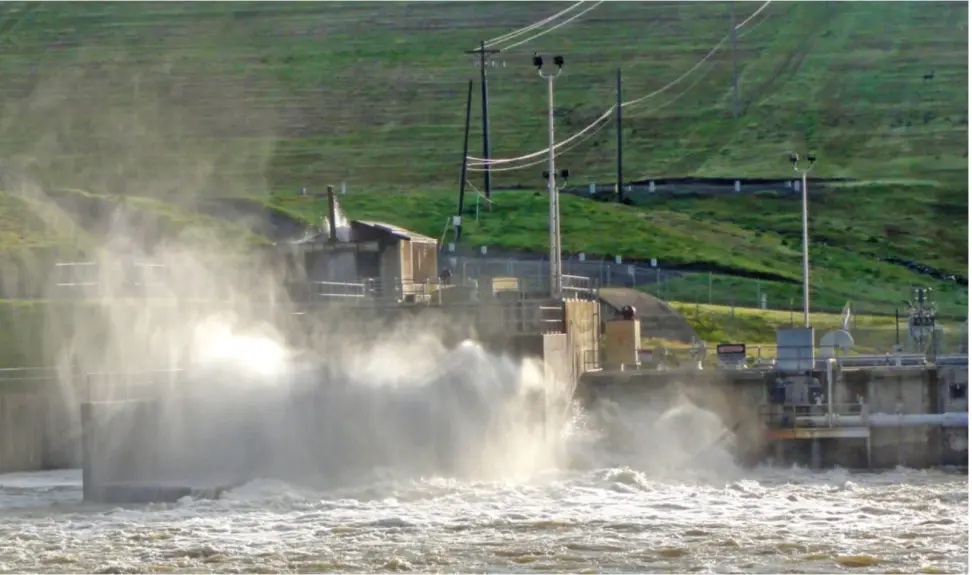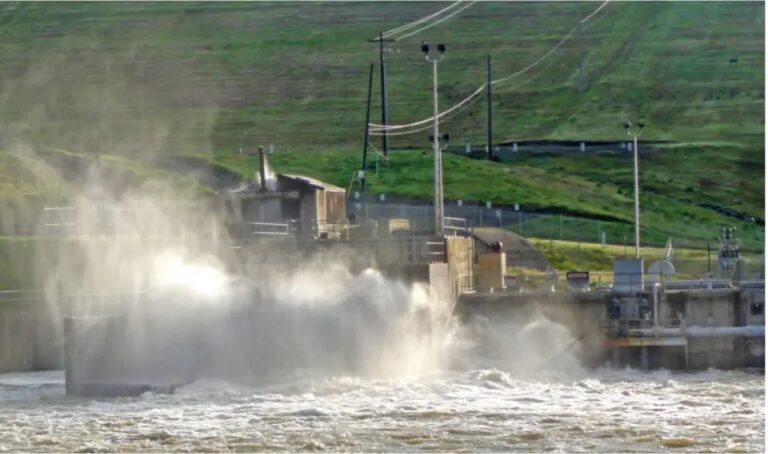
by Suzanne Pletcher; Courtesy of the Ukiah Daily Journal (Nov 23, 2022)
Speakers at a recent Power Forum sponsored by the Willits Economic Localization group shared new information about Mendocino County’s local transition to a carbon-free future, advice for coping with power outages, and how to save money on energy.
Keith Rutledge of Renewable Energy Development Institute (REDI) in Willits and Geof Syphers, CEO of Sonoma Clean Power, the public power provider serving Mendocino County, shared insights summarized here.
How did utilities manage to keep the power on during the recent heat wave?
When temperatures in Northern California topped a record 116 degrees in September, the electric grid would have been forced to shut down if not for the public’s response to the state’s Flex Alerts. An emergency appeal to reduce energy use was sent to every cellphone by the California Independent System Operator, which manages the electric grid. Within 10 minutes of receiving the alert, people responded and reduced demand for power by 2,000 megawatts, which is significant. However, utilities have to come up with ways to store power to cope with demand during these heat waves, like batteries distributed at public locations like schools, because relying on Flex Alerts won’t fix the problem. Also, utilities can market power saving programs like Sonoma Clean Power’s GridSavvy Rewards, in which a customer receives financial rewards for reducing their electricity use when there is excessive demand on the grid.
Are there inexpensive ways to keep my refrigerator running and lights on during a power outage?

Everyone can have access to backup power for very little expense. When you hear there may be a power outage, put a few gallons of water into the freezer (with enough room at the top for expansion when the water freezes), and then put those frozen gallons in the refrigerator when there is a power outage. They will keep your food cold for a few days. You can purchase a small, inexpensive battery inverter from a camping store or online that also may keep your fridge, several lights, a phone and computer going for a few days. An electric car can power a home for several days too.
What are we doing to generate more clean, renewable energy in Northern California?
There is a lot of innovation happening in our backyard. Humboldt County is leading the state’s efforts to build offshore wind energy and may generate 30 percent of California’s target for wind energy. Mendocino County has joined the GeoZone charged with development of 500 megawatts of new geothermal energy in the region. Lake County plans to install an innovative system that will use solar energy to pump water from a giant storage tank located down low to a storage tank up high, and then release that water to generate electricity when it’s needed.
But how do we get off fossil fuels once and for all?
Solar power is now the most economical way to produce electricity on the planet. The problem is that it only produces electricity when the sun is shining. No matter how much solar, wind and back-up batteries we have, we are never going to turn off all natural gas-fired power plants until we have enough baseload renewables. In our region, that means geothermal. That is what Sonoma Clean Power is working to develop right now.
What are the best first steps to reduce my use of fossil fuels?
Take some of the money that you spend on your home’s utility bill and invest it in inexpensive weatherstripping, caulking and insulation to plug holes in your house where heat and cold can get in. Public libraries in Mendocino County have free do-it-yourself toolkits that you can borrow and use to find leaks and fix them. You’ll save money on your utility bill and also improve the value and comfort of your home. Keep investing some of your financial savings in further energy improvements that save you even more money. If you need help getting started, North Coast Energy Services in Ukiah offers low and no-cost weatherization services. REDI offered in-home do-it-yourself classes before COVID and may start them again. The state and federal government will help by subsidizing insulation and efficient electric appliances. You can explore all-electric appliances and rebates that are available to you at Sonoma Clean Power’s Advanced Energy Center in downtown Santa Rosa.
How can a local household or business completely stop using oil and natural gas fossil fuels that are the primary cause of climate change?
Probably the best way is to switch to EverGreen electricity—a 24/7 mix of local solar and geothermal renewable energy that is offered in Mendocino County by Sonoma Clean Power—and convert to an all-electric home or building as you can afford it. Add an electric car that you charge at home and you will have eliminated carbon emissions from the most polluting sectors, electricity and transportation. You can go further and add rooftop solar panels and a back-up battery that will shield you from electricity price shocks, stabilize your expenses, and keep the lights on during power outages. Rebates and tax credits are available or are coming that will help you to afford all of these changes.
What is the best time of day to charge an electric car?
From the standpoint of reducing carbon emissions, midday between 11 am. and 3 p.m. is the best time to charge an electric car—and people who charge their cars at that time are actually providing a service to the rest of us in California. That’s because solar energy in California is plentiful and supplies so much electricity to the grid midday that sometimes the state has to send it out of state to another utility that can use it. Conversely, charging an electric vehicle at night puts more pressure on the grid at a time when power is almost entirely generated from natural gas, a fossil fuel.
Is there a benefit to Ukiah residents of having their own city electric utility?
Ukiahans are lucky that their city owns and maintains its own power lines, because their rates are 30-50 percent lower than PG&E’s rates. Customers outside the city of Ukiah can choose to purchase electricity generated by either Sonoma Clean Power or PG&E, but the electricity is delivered on transmission infrastructure owned and maintained by PG&E. Maintaining that power infrastructure contributes at least 30 percent to a household’s electric utility bill. The city of Ukiah provides both power and its own power line maintenance.


